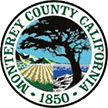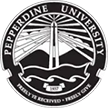Cal Interpreting & Translations is renowned for its commitment to providing comprehensive language services, catering to clients' diverse needs worldwide. Cal Interpreting & Translations proudly offers Itza Maya language services, facilitating effective communication between individuals and organizations seeking to engage with the Itza Maya community. Itza Maya, also known as Icaiche Maya, Itz, Itzaj, Itzaj Maya, Itzaʼ Maya, Maya, or Petén Itza' Maya, is one of the Mayan languages, spoken by the Itza people in near Lake Peten Itza in north-central Guatemala and neighboring Belize. It has a rich history and place in the Mayan language family. Due to various challenges, including political marginalization and language shift, it is now endangered.
The Itza Maya language derives from the ancient Mayan civilization, which flourished in Mesoamerica thousands of years ago. The Itza people, an ethnic group of Mayan descent, primarily inhabited the region surrounding Lake Petén Itzá in present-day Guatemala. The Itza Maya civilization dominated Mesoamerica with its architectural brilliance and impressive Chichen Itza ruins.
When Chichen Itza held power, the language known as Itzaʼ served as the administrative language across a significant portion of the Yucatán Peninsula. As a result of a government prohibition on the use of the Itzá language in the 1930s, two successive generations of Itzá Maya individuals were raised with Spanish as their sole language of instruction. However, in the late 1980s, there was a surge of interest among Maya communities, including the Itzá, to preserve their cultural heritage. The Guatemalan government has played a supportive role in this reinvigoration movement by establishing an academy dedicated to promoting and revitalizing Mayan language. It is still spoken today by less than 1000 older people residing in a small San Jose, Guatemala community. Although the Spanish invasion led to this great civilization's downfall, their rich cultural traditions continue to thrive.
Mayan languages constitute a vast and complex linguistic family comprising over 30 distinct languages. Itza Maya belongs to the Yucatecan branch of Mayan languages, alongside Yucatec Maya, Lacandon Maya, and Mopan Maya. While Itza Maya shares certain similarities with these related languages, its unique characteristics set it apart. As with many indigenous languages, the Itza Maya language has faced challenges due to historical events and language contact, emphasizing the importance of preserving this endangered language. This complex language has grammar with noun incorporation and suffixes for tense, aspect, and mood. Efforts are being made to preserve this fascinating history through education and community initiatives.
Recognizing the significance of effective communication between cultures, Cal Interpreting & Translations offers professional Itza Maya translation services. These services encompass a wide range of domains, including legal, medical, technical, and general translation. Cal Interpreting & Translations ensure translations' accuracy and cultural sensitivity, employing skilled linguists proficient in Itza Maya who profoundly understand the language's nuances and cultural intricacies.
The Itza Maya language services face many challenges that threaten its existence. As one of the 30 languages in the Mayan family with only a few thousand speakers left, it is currently considered an endangered language. Like many indigenous languages worldwide, Itza Maya faces several challenges to its survival. The encroachment of dominant languages, limited educational opportunities, and cultural assimilation contribute to a decline in native speakers. However, efforts to revitalize and preserve the language are underway, led by organizations, scholars, and native speakers committed to maintaining their linguistic and cultural heritage.
The Itza Maya culture encompasses a rich tapestry of traditions, beliefs, and practices that have evolved over centuries. From ancient archaeological sites such as the pre-Columbian city of Chichen Itza to vibrant rituals and ceremonies, Itza Maya culture offers a glimpse into the past while continuing to shape the identity of contemporary Itza communities. Preserving the Itza Maya language helps safe guard this vibrant cultural heritage.
The Mayan civilization is renowned for its linguistic diversity, encompassing a wide array of languages within its cultural tapestry. Apart from Itza Maya, numerous other Mayan languages contribute to the richness and complexity of this ancient civilization. Yucatec Maya, spoken in the Yucatan Peninsula, is one of the most widely spoken Mayan languages. Mopan Maya, prevalent in parts of Belize and Guatemala, showcases its unique features and cultural expressions. Other Mayan languages, such as K'iche', Kaqchikel, Mam, and Q'eqchi', among many others, continue to be spoken by vibrant communities throughout Central America. Each Mayan language preserves distinct linguistic characteristics, dialectal variations, and cultural nuances, contributing to the Mayan civilization's remarkable linguistic and cultural mosaic.
The Itza people primarily speak the Itza Maya language. Itza Maya is a member of the Yucatecan branch of Mayan languages, which includes Yucatec Maya, Lacandon Maya, and Mopan Maya. These languages share historical connections and similarities while retaining distinct characteristics and regional variations.
Cal Interpreting & Translations prides itself on its commitment to linguistic inclusivity and diversity. The company understands the importance of providing language services for less commonly spoken languages, such as Itza Maya. Through its extensive network of skilled interpreters and translators, Cal Interpreting & Translations ensures clients can effectively communicate with the Itza Maya community and other linguistic communities worldwide.
The Itza Maya language is predominantly spoken in northern Guatemala surrounding Lake Petén Itzá. Itza Maya communities have inhabited this area for centuries, maintaining their language and cultural traditions despite their challenges. Today, Itza Maya can also be found among diaspora communities in other parts of Guatemala and various locations worldwide.
Cal Interpreting & Translations' Itza Maya language services facilitate communication between individuals and organizations seeking to engage with the Itza Maya community. The Itza Maya language and culture offer valuable insights into the ancient Mayan civilization and its contemporary legacy. By providing professional translation and interpretation services, Cal Interpreting & Translations contributes to preserving and revitalizing the Itza Maya language, ensuring that this rich cultural heritage continues to thrive and be celebrated. Check out our website for more information if you want to learn more about Itza Maya or our translation services.


No matter what your needs may be, we can and are ready to assist you now. We have translators and interpreters standing by 24/7.

CIT's interpreter is such a rockstar, and it’s so great to have him as a lead interpreter for our Board meetings. About Our Interpreters 
Thank you for always being able to handle emergency interpreting assignments with ease. About Urgent Requests 
Thank you for always being able to handle emergency interpreting assignments with ease. About Urgent Requests 
Your translation rates are more competitive than other language service providers I used in the past. About Pricing 

Professionalism matters at CIT. We respond to request inside 24 hours.







